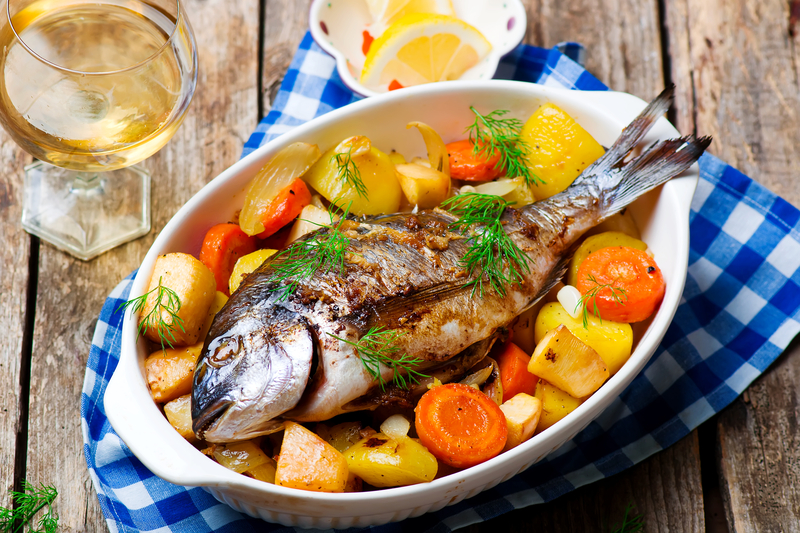 When it comes to cooking fish, baking is a popular and healthy method that can yield delicious results.
When it comes to cooking fish, baking is a popular and healthy method that can yield delicious results.
Baking fish is not only easy but also allows you to infuse your chosen flavors into the dish.
Whether you’re a seasoned chef or a novice cook, understanding the rule of thumb for baking fish can help you achieve perfectly cooked, moist, and flavorful fish every time.
In this article, we’ll explore the key principles and tips for baking fish to perfection.
Choosing the Right Fish
Before delving into the rules of baking fish, it’s essential to select the right type of fish for your dish.
Different fish varieties have varying textures, flavors, and ideal cooking methods.
Here are some popular fish choices for baking:
- Salmon
Salmon is a fatty fish known for its rich flavor and tender texture.
It’s an excellent choice for baking because the higher fat content helps keep the fish moist during cooking.
- Cod
Cod is a mild-flavored white fish that bakes beautifully.
It’s often used in dishes like fish and chips, but it can be transformed into an elegant baked entree.
- Tilapia
Tilapia is another mild white fish that’s readily available and budget-friendly.
Its subtle flavor makes it a versatile option for various seasoning and topping choices.
- Mahi-Mahi
Mahi-Mahi, also known as dolphin fish or dorado, is a firm, mildly sweet fish that holds up well to baking.
It pairs well with tropical flavors like citrus and coconut.
The Rule of Thumb for Baking Fish
 Now that you’ve chosen your fish, let’s dive into the rule of thumb for baking fish to perfection:
Now that you’ve chosen your fish, let’s dive into the rule of thumb for baking fish to perfection:
- Preheat Your Oven
Start by preheating your oven to the desired temperature.
Generally, a temperature range of 350°F to 450°F (175°C to 230°C) works well for most fish.
The exact temperature depends on the thickness of your fish and your recipe.
- Prepare Your Fish
Before placing the fish in the oven, make sure it’s properly prepared.
Rinse the fish under cold water and pat it dry with paper towels.
This step helps ensure even cooking and prevents excess moisture.
- Season and Flavor
Season your fish generously with salt and pepper, and then consider adding herbs, spices, and aromatics for extra flavor.
Common choices include garlic, lemon, dill, rosemary, and thyme. Y
ou can also use marinades or sauces to infuse flavor.
- Choose the Right Baking Dish
Select an appropriate baking dish based on the size and quantity of fish you’re cooking.
A baking sheet, glass baking dish, or parchment-lined tray can all work well.
This Pyrex dish is the ideal choice for baking fish, thanks to its reliable heat distribution and easy-to-clean glass surface.
Its versatility and durability make it a go-to option for fish lovers and home cooks alike.
Grease the dish lightly to prevent sticking.
- Bake to Perfection
Place the seasoned fish in the preheated oven and bake according to the rule of thumb: approximately 10 minutes per inch of thickness.
For example, if your fish fillet is 1 inch thick, bake it for about 10 minutes.
Adjust the time accordingly for thicker or thinner fillets.
- Check for Doneness
Fish is cooked when it flakes easily with a fork, and the internal temperature reaches 145°F (63°C).
Avoid overcooking, as it can lead to dry and tough fish.
Tips for Success
To ensure your baked fish turns out consistently delicious, consider these additional tips:
- Use a meat thermometer: Checking the internal temperature is the most foolproof way to determine if your fish is cooked correctly. This digital thermometer is the ideal kitchen tool, known for its precision and speed in providing accurate temperature readings. With its ability to remove guesswork, it ensures your dishes are cooked to perfection every time.
- Monitor cooking time: Keep a close eye on your fish as it bakes to prevent overcooking. It’s better to slightly undercook it and let it rest, as residual heat will continue to cook the fish.
- Add moisture: Basting the fish with melted butter, olive oil, or a flavorful sauce during baking can enhance its taste and prevent dryness.
- Experiment with toppings: Get creative with toppings like breadcrumbs, Parmesan cheese, or chopped nuts to add texture and flavor to your baked fish.
Bottom Line – What is the Rule of Thumb for Baking Fish?
 Baking fish is a versatile and healthy cooking method that can yield mouthwatering results with a few simple guidelines.
Baking fish is a versatile and healthy cooking method that can yield mouthwatering results with a few simple guidelines.
By choosing the right fish, following the rule of thumb, and implementing these tips, you’ll be well on your way to serving perfectly baked fish dishes that will impress family and guests alike.


